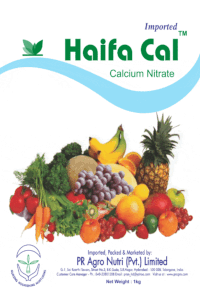Calcium
Calcium (Ca) is sometimes considered low key nutrient, but it carries a heavy load in plant growth. Calcium availability is adequate for most crops when soils are limed to properly adjust soil acidity. Deficiencies of Ca are most likely to occur on acid, sandy soils from which available Ca has been leached by rain or irrigation water, and on strongly acid peat soil where total soil Ca is low. High exchangeable soil sodium (Na) may depress plant uptake of Ca.Functions of Calcium in Soil
In soil, calcium replaces hydrogen (H) ions from the surface of
soil particles when limestone is added to reduce soil acidity. It
is essential for microorganisms as they turn crop residues into
organic matter, release nutrients, and improve soil aggregation
and water holding capacity. Calcium helps enable nitrogen fixing
bacteria that form nodules on the roots of leguminous plants to
capture atmospheric nitrogen gas and convert into a form that
plants can use.Functions of Calcium in Plants
Calcium improves the absorption of other nutrients by roots and their translocation within the plant. It activates a number of plant growth-regulating enzyme systems, helps convert nitrate-nitrogen into forms needed for protein formation, is needed for cell wall formation and normal cell division, and contributes to improved disease resistance. Calcium, along with magnesium and potassium, helps to neutralize organic acids, which form during cell metabolism in plants. (Ca)Calcium Deficiency
Calcium deficiencies can occur and they need to be avoided or corrected. Symptoms of deficiency include:- Slow root development. Roots may develop a dark color and in
severe cases the growing point may die.
- New leaf growth may slow and leaf tips may stick together.
Remember that calcium does not readily translocate within the
plant so deficiency symptoms will appear on the new
growth.
- Poor nodulation by nitrogen fixing bacteria on leguminous
plant roots. Ineffective nodules are white to grayish green
inside while healthy nodules have dark pink interiors.
- Aborted and shriveled fruit on peanuts. A shortage of calcium
at "pegging" results in a high percentage of "pops".
- Blossom end rot in tomatoes. Calcium and proper water
management improve plant resistance to this problem.
- Darkened plumule or "black heart" in peanut seed. This
reduces yield, quality and crop value.
- Pod rot diseases on peanuts. Pods are predisposed to fungus
infections when calcium is deficient or out of balance with Mg
and K. Calcium deficiencies are most likely to occur in acid,
sandy soils from which calcium has been leached by rain or
irrigation water. It may also occur in strongly acid peat and
muck soils where total calcium is low.


